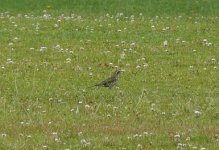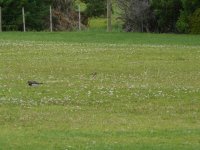Papuan birder
- Lost in the Pacific -
Another Helm Identification Guide which has been many years in the making is just off the press! It will apparently hit the bookshops in mid-June, have already pre-ordered my copy. Samples of the plates used in the book can be viewed over at amazon.co.uk.
As I have understood it the layout will be similar to the one used in the Cotingas and Manakins Guide? The authors have assembled a database of more than half a million records of cuckoos, which is impressive, but aim disappointed to learn that distribution maps with all their original underpinning records will not be published in the final book.
- Erritzøe, J., Mann, C.F., Brammer, F. & Fuller, R.A. 2012. Cuckoos of the World. 544pp, Christopher Helm, London.
As I have understood it the layout will be similar to the one used in the Cotingas and Manakins Guide? The authors have assembled a database of more than half a million records of cuckoos, which is impressive, but aim disappointed to learn that distribution maps with all their original underpinning records will not be published in the final book.
Last edited:







